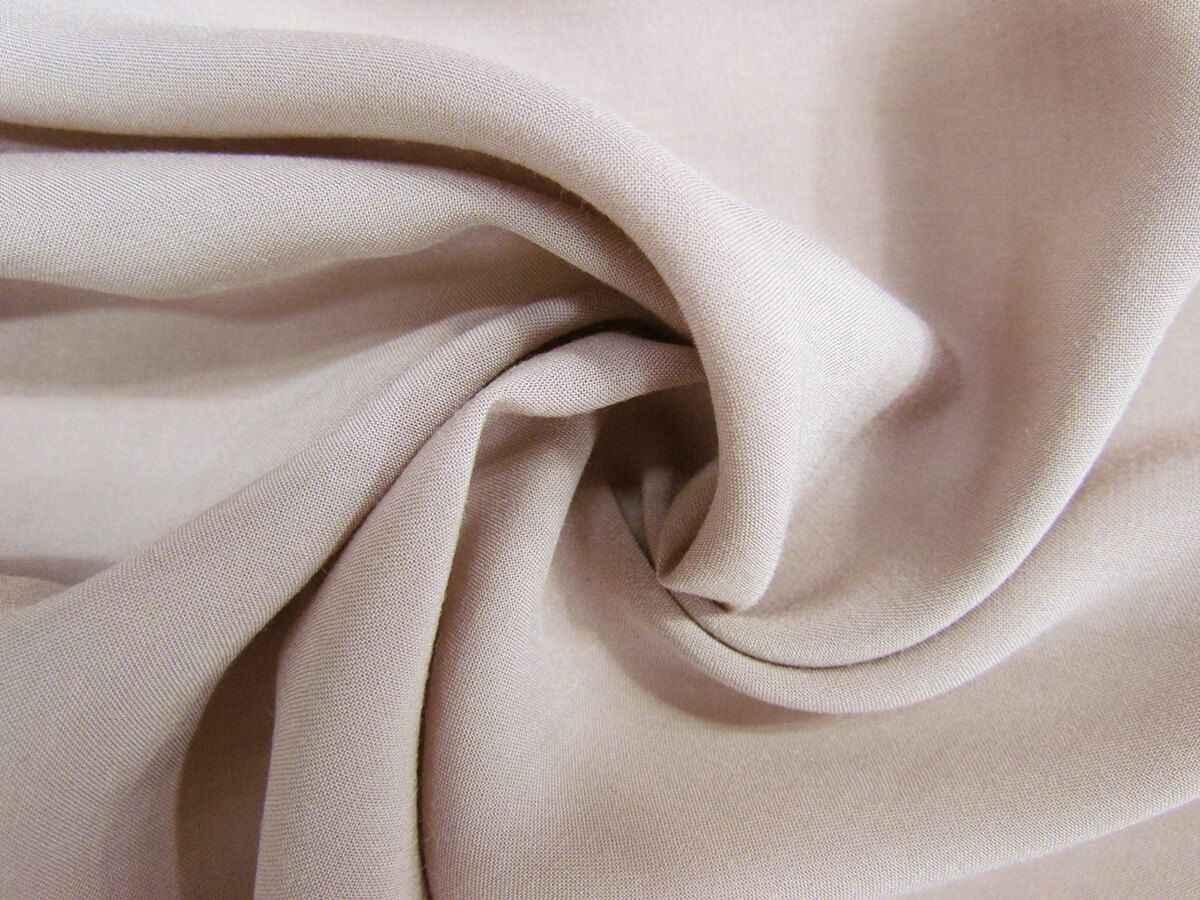Guide to Cupro Fabric

Everything You Need to Know About Cupro
What is Cupro?
Cupro, short for cuprammonium rayon, is a regenerated cellulose fiber derived from cotton linter. Known for its luxurious feel and eco-friendly production process, cupro is gaining popularity in the fashion and textile industries. Cupro is a type of rayon fabric made from cellulose fibers extracted from cotton waste. It's known for its silky texture, breathability, and biodegradability. Often compared to silk and modal, cupro stands out due to its unique properties and sustainable production process.
The Benefits of Cupro
- Eco-Friendly: Cupro is produced from cotton waste, reducing waste in the textile industry. The production process also uses a closed-loop system, minimizing environmental impact.
- Luxurious Feel: Cupro has a soft, silky texture that feels luxurious against the skin. It's often used in high-end fashion due to its elegant drape and sheen.
- Breathable and Comfortable: This fabric is highly breathable, making it ideal for warm climates. It wicks moisture away from the body, keeping you cool and comfortable.
- Durable and Easy to Care For: Despite its delicate appearance, cupro is durable and easy to care for. It can withstand machine washing and retains its shape and color over time.
- Hypoallergenic: Cupro is hypoallergenic, making it suitable for people with sensitive skin or allergies.
How is Cupro Made?
The production of cupro involves several steps:
- Cotton Linter Collection: The process starts with the collection of cotton linter, the short fibers left after the cotton is ginned.
- Dissolution: The cotton linter is dissolved in a solution of copper and ammonia, creating a viscous liquid.
- Extrusion: The viscous solution is extruded through spinnerets into a coagulating bath, forming fibers.
- Regeneration and Washing: The fibers are regenerated and washed to remove impurities.
- Spinning and Weaving: The purified fibers are spun into yarn and woven into fabric.
Applications of Cupro
Cupro's unique properties make it suitable for a variety of applications:
- Fashion: Used in clothing items like dresses, blouses, and scarves due to its silky feel and drape.
- Home Textiles: Ideal for bed linens and curtains because of its breathability and luxurious texture.
- Medical Textiles: Utilized in medical applications due to its hypoallergenic nature.
Caring for Cupro
Taking care of cupro fabric is simple:
- Washing: Machine wash on a gentle cycle with cold water or hand wash. Avoid hot water as this can shrink and damage the fabric.
- Always prewash: Cupro fabric can be prone to shrinkage so always prewash before cutting your project out.
- Drying: Air dry flat or hang to dry. Avoid using a tumble dryer as the heat can damage the fabric.
- Ironing: Iron on a low setting if needed, but often cupro doesn't require ironing due to its wrinkle-resistant nature.
FAQs About Cupro
Q: Is cupro eco-friendly?
A: Yes, cupro is produced from cotton waste and uses a closed-loop process, making it an eco-friendly fabric choice. Furthermore, any cupro fabrics that we stock here at The Remnant Warehouse would've been sourced as designer remnant rolls or deadstock cupro, saving them from becoming textile waste from the fashion industry
Q:Do you stock cupro fabrics?
A: Cupro fabric is a very popular product, and when it comes in it usually goes out fast! Like the majority of our fabrics we do not order from a regular supplier as our business model is a more sustainable one where we purchase our fabrics as deadstock from local designers. This means that we rely on what local designers, fashion labels and garment manufacturers have left over to sell us at the end of their production runs. You can search for cupro in our search bar and if we have any it will show up.
Q:What are some alternatives to cupro?
A: If you are having trouble sourcing cupro fabric, as it is one of the rarer fabrics we get in, have a look for rayon, tencel, lyocell and viscose alternatives.
Q: How does cupro compare to silk?
A: Cupro has a similar texture and drape to silk but is often more affordable and can be easier to care for.
Q: Can cupro be machine washed?
A: Yes, cupro can be machine washed on a gentle cycle with cold water.
Q: Is cupro suitable for people with sensitive skin?
A: Yes, cupro is hypoallergenic and suitable for people with sensitive skin or allergies. Always prewash your fabrics to remove any surface dust or excess finishes used in its manufacture, especially if you have allergies or sensitivities.
